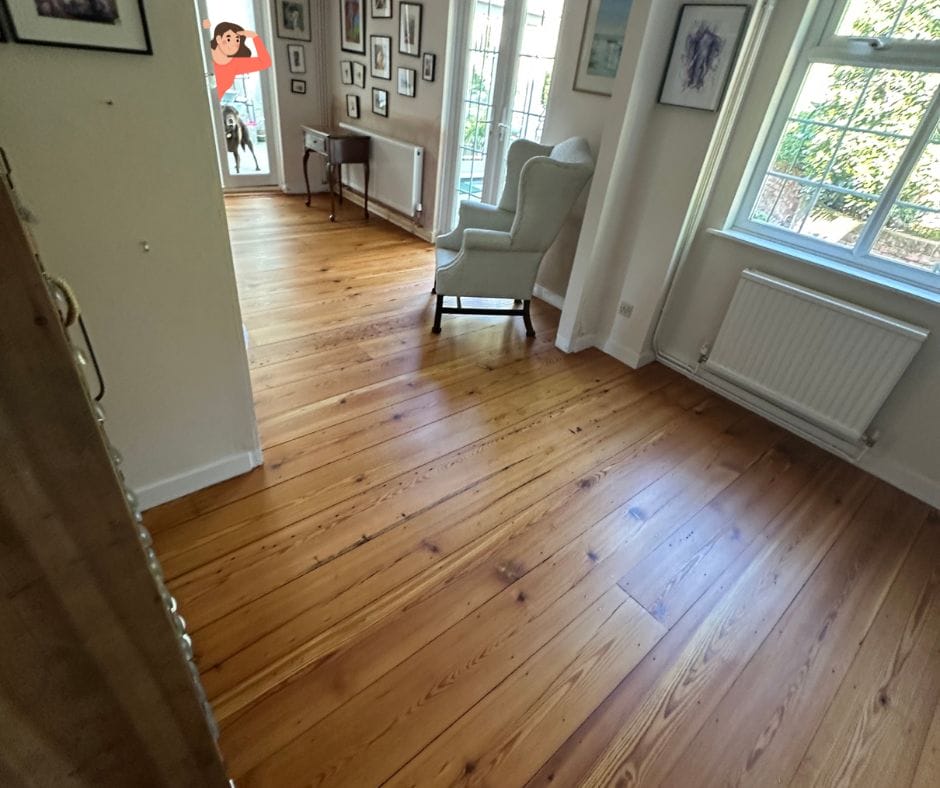Grab a cuppa, kick back for five minutes – Our latest article “Restore Your School’s Wood Floors Over Summer” is for all caretakers, site managers, and facilities teams across Cambridgeshire, Essex, Suffolk and Hertfordshire!…
If you’re the one holding the keys (and the to-do list) for a school, college, or educational building, summer isn’t just for deckchairs and deep cleans — it’s a golden opportunity to tackle bigger maintenance jobs. And at the top of that list?
👉 Restoring and protecting your wood floors.
Why Proper School Floor Sanding Matters
In many educational settings, wood floors are everywhere — from halls and corridors to classrooms and offices. Over the course of an academic year, they endure:
- Constant foot traffic
- Shifting furniture
- Sports equipment
- Cleaning chemicals
- General wear and tear
Restore your school’s wood floors over summer, you will help:
- Create a smart, professional environment
- Improve slip resistance and safety
- Reduce daily cleaning time and cost
- Protect against damage and splinters
- Extend the life of your floor by years
If the surface looks dull, absorbs dirt quickly, or shows patchy wear — it’s time for a rethink.
Wax Finishes vs Modern Coatings
In years gone by, many schools relied on wax finishes — stripped and re-applied each summer. While this can still be effective in some areas, it’s high-maintenance and short-lived.
Today’s modern coatings offer better durability and easier upkeep.
Penetrating Oils (like Pallmann Magic Oil or Bona Craft Oil)
- Natural matte look
- Easy to spot-repair
- Great for breathable, low-traffic spaces
2K Commercial Lacquers (e.g. Bona Traffic HD, Pallmann Pall-X98, Tover Idrolak DR97)
- Designed for heavy traffic
- Fast-curing options available
- Highly resistant to wear, chairs, and sports activity
These professional-grade products are ideal for halls, gyms, and corridors.
Why Preparation Is Everything
Even the best floor finish won’t do its job without the right prep underneath. Wood Floor sanding isn’t a quick tidy-up — it’s the foundation of a long-lasting result.
A proper job involves removing every layer of old finish down to the bare wood, followed by careful, progressive sanding to flatten and smooth the surface.
Dust-extraction systems should be in place to keep your site clean and safe during the process.
If there are gaps or minor damages, they’ll need to be filled to create an even surface.
The edges, corners, and areas near skirting boards also need close attention to ensure nothing’s missed.
Only once this detailed groundwork is done can the floor be primed and finished correctly — and confidently.
So, as you can see… when you restore your school’s wood floors, it’s not a quick fix… It takes time to get it right!
Plan Early – Surveys and Lead Times Matter
The truth? Summer gets busy fast. The best contractors fill their diaries weeks in advance. To stay ahead:
- Book your survey before the end of term
- Get accurate measurements and tailored advice
- Identify hidden issues (moisture, old adhesives, weak subfloors)
- Receive a clear plan and quote
Managing multiple sites? Group surveys together to streamline decisions and save time!
What Happens During the Work?
Depending on the size of your space, sanding and finishing can take 2 to 7 days. A good contractor will:
- Provide detailed risk assessments and method statements
- Use signage and barriers to keep areas safe
- Work in coordination with other summer tasks (painting, repairs)
- Offer flexibility with access times and security protocols
Bonus tip: Choose a team with multiple technicians and a full fleet of sanding tools. One-man bands may be cheaper, but if a machine fails or there’s illness, you risk costly delays — and they’re often booked out months ahead.
Common Pitfalls to Avoid When You Restore Your School’s Wood Floor
- Booking too late: Summer slots don’t last long
- Choosing on price alone: Cheap often means rushed prep and short-lived results
- Skipping a site survey: Surface appearances can be deceiving
- Ignoring aftercare: Some finishes need specific cleaning and maintenance routines
Keep That Floor Looking Good for Years
With the right aftercare, a well-finished wood floor can last 5–10 years before needing a full sand again.
Here’s how to make it last:
- Use pH-neutral cleaners (ditch the bleach)
- Avoid over-wetting during cleaning
- Add felt pads to chairs and furniture legs
- Stick to a consistent cleaning routine
- In busy areas, consider a “screen and recoat” every few years for a refresh
Many professional teams also offer aftercare kits or even refresher services to help your site team keep things pristine. We don’t just restore your school’s wood floors, we extend their life and help you to help us!
So, Is It Time?
If your school’s wood floors look dull, patchy, or just plain tired — or if it’s been close to a decade since they were last restored — then yes, it’s time to take action.
Booking early gives you choice and peace of mind. You’ll have time to plan around other summer works, avoid last-minute stress, and make sure the job’s done right.
Whether you’re managing one building or coordinating across multiple sites, the summer break is your golden window to get things sorted.
When students and staff return in September, you’ll be able to welcome them into a space that feels fresh, clean, and safe — and one that’s built to last.
💙 Here If You Need Us
With over 12 years of experience restoring wood floors in schools, colleges, and commercial buildings across Cambridgeshire, Essex, Suffolk and Hertfordshire — we know what works, what doesn’t, and how to help you protect your investment.
We’re always happy to pop by for a site survey, walk you through your options, and help build a plan that works around your summer timeline.



